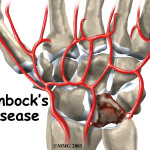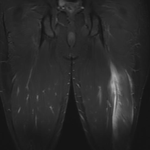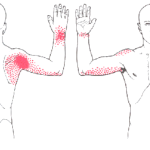Introduction
Those in the world of sports physiotherapy would be aware of the frequency with which we encounter episodes of patellar instability. As has been suggested previously on this site, patellar dislocation accounts for 2 – 3% of all knee injuries, and furthermore, it is the second most common cause of knee haemarthrosis (Aglietti et al., 2001; Finthian et al., 2004).
Whilst much research is performed in the adult population, it is important to recognise patellar dislocation as one of the most common acute knee injuries in children.(Finthian et al., 2004; Palmu et al., 2008; Stancin & Parker, 2007). Accordingly, this article will discuss new research into the predictors of patellofemoral joint instability in the adolescent and paediatric populations.
What Is Already Known About Patellofemoral Dislocation In This Population?
Unfortunately, there is less prognostic information regarding patellar dislocation in the paediatric population, compared to the adult population. This makes it challenging to make informed decisions regarding appropriate early management (Lewallen et al., 2013). For the majority of primary (first-time) dislocations conservative physiotherapy management with closed reduction and extension immobilisation (for at least 3 weeks), followed by graduated rehabilitation and strengthening program, is considered the most appropriate course of treatment (Buchner et al., 2005; Palmu et al., 2008).
For more information on rehabilitation, see our previous post on Primary Patellar Dislocation
However, despite conservative management being first-line, many patients unfortunately go on to have long term complications including:
- Recurrent episodes of instability or dislocation
- Anterior knee pain
- Reduced activity level
- Degenerative changes i.e. patellofemoral OA (Stancin & Parker, 2007)
This may suggest that there is a claim for primary surgical intervention. However, a systematic review, published by Stefancin and Parker (2007), suggest that surgical intervention is indicated only in the following cases:
- Significant chondral injury
- Osteochondral fractures
- Large medial patellar stabilizer defects (i.e. MPFL, medial retinaculum, VMO)
- Subsequent dislocation
- Failure to improve with conservative management
In this case, the surgical plan is based on the individual, including:
- History
- Anatomic factors
- Age
- Concomitant injuries
In the paediatric and adolescent populations, given the issues associated with open/closing physes, there is controversy regarding when more aggressive management should be pursued (Apostolovic et al., 2012). Thus, information regarding predictors of outcome following conservative management in this population would be beneficial to allow us to make informed management decisions.
To the new research…
Predicting Recurrent Patellofemoral Instability in Paediatric/Adolescents
Lewallen et al. (2013) have performed a single-institution, retrospective review of patients with acute patellofemoral dislocation. The authors found adequate information on 222 knees (in 210 patients) that met the following inclusion criteria:
- Age 18 years or younger at the time of injury
- Primary (i.e. first-time) patella dislocation requiring reduction
- Radiographs within 4 weeks of the initial instability episode
The authors then evaluated the data in an attempt to discover what patient factors correlated with recurrent patellofemoral instability.
Results of This Research
From those that met the inclusion criteria, 198 cases were treated conservatively. Interestingly, 76 (38.4%) suffered a subsequent episode of subluxation or dislocation. Thinking of the converse, this meant that primary conservative management in this group had a success rate of 61.6%. Of those who suffered recurrent instability, 61.8% of the episodes were in the first year and 88.2% were within the first 3.
When assessing for risk factors for recurrent instability, there was no significant risk associated with the following factors:
- Age
- Sex
- BMI
- Patella Alta
There was, however, a borderline a strong association with trochlear dysplasia. The hazard ration was 2.57, which means that those with trochlear dysplasia were 2.57 times more likely to experience recurrent instability. Interestingly, 58.3% of those with recurrent instability showed evidence of trochlear dysplasia.
The authors also examined a statistical model based on physeal status and presence or absence of trochlear dysplasia. For a patient with open/closing physes and trochlear dysplasia, the risk of recurrent instability was increased by a factor of 3.3 and for those closed physes and trochlear dysplasia the risk was increased by a factor of 2.2 when compared to those with closed physes and no trochlear dysplasia.
Limitations of The Research
As per usual, there are a few limitations to this research, most notably these include:
- Retrospective design
- One centre included only – which may lead to bias
- High “drop-out rate” – whilst the mean follow-up was 3 years, only 75% of patients had greater than 1 year of follow-up.
Clinical Implications of This Research
This research gives us increased insight into the management and prognosis of the paediatric or adolescent patient with an acute primary dislocation. Demographically, the first-time patellofemoral dislocation in patients aged 18 years or younger had a nearly equal sex distribution. In this study, there were 102 females (45.9%) and 120 males (54.1%).
Furthermore, the association between physis status and recurrent instability concurs with previous research. Seeley et al (2012) showed the highest incidence of recurrence among the younger patients. This seems to suggest that younger, skeletally immature patients are less likely to have a positive outcome with conservative management.
Finally, radiographic information is beneficial in determining likelihood of recurrent instability. As the current evidece suggests that radiographic evidence of trochlear dysplasia meant patients were more than 2.5 times more likely to have recurrent instability, and those with immature physes and trochlear dysplasia were 3 times more likely to have subsequent trouble that those with no trochlear dysplasia, and closed physes.
What Are Your Thoughts?
What are your experiences dealing with adolescent or paediatric patients with acute patellar dislocation? I would love to know so be sure to let me know in the comments or you could:
Promote Your Clinic: Are you a physiotherapist or physical therapist looking to promote your own clinic? Check this out.
References
Aglietti P, Buzzi R, Insall J. Disorders of the patellofemoral joint. In: Insall J, Scott W, eds.
Surgery of the Knee, 3rd ed. New York, NY: Churchill Livingstone; 2001:913–1042.
Apostolovic M, Vukomanovic B, Slavkovic N, et al. Acute patellar dislocation in adolescents: operative versus nonoperative treatment. Int Orthop. 2011;35(10):1483-1487.
Buchner M, Baudendistel B, Sabo D, Schmitt H. Acute traumatic pri- mary patellar dislocation: long-term results comparing conservative and surgical treatment. Clin J Sport Med. 2005;15(2):62-66.
Fithian DC, Paxton EW, Stone ML, et al. Epidemiology and natural history of acute patellar dislocation. Am J Sports Med. 2004;32(5):1114-1121.
Lewallen LW, McIntosh AL, Dahm DL. Predictors of Recurrent Instability After Acute Patellofemoral Dislocation in Pediatric and Adolescent Patients. Am J Sports Med 2013 41: 575
Palmu S, Kallio PE, Donell ST, Helenius I, Nietosvaara Y. Acute patellar dislocation in children and adolescents: a randomized clinical trial. J Bone Joint Surg Am. 2008;90(3):463-470.
Seeley M, Bowman KF, Walsh C, Sabb BJ, Vanderhave KL. Magnetic resonance imaging of acute patellar dislocation in children: patterns of injury and risk factors for recurrence. J Pediatr Orthop. 2012;32(2):145-155.
Stefancin JJ, Parker RD. First-time traumatic patellar dislocation: a systematic review. Clin Orthop Relat Res. 2007;455:93-101.
Image Credit: nseil général des Yvelines
Related Posts










